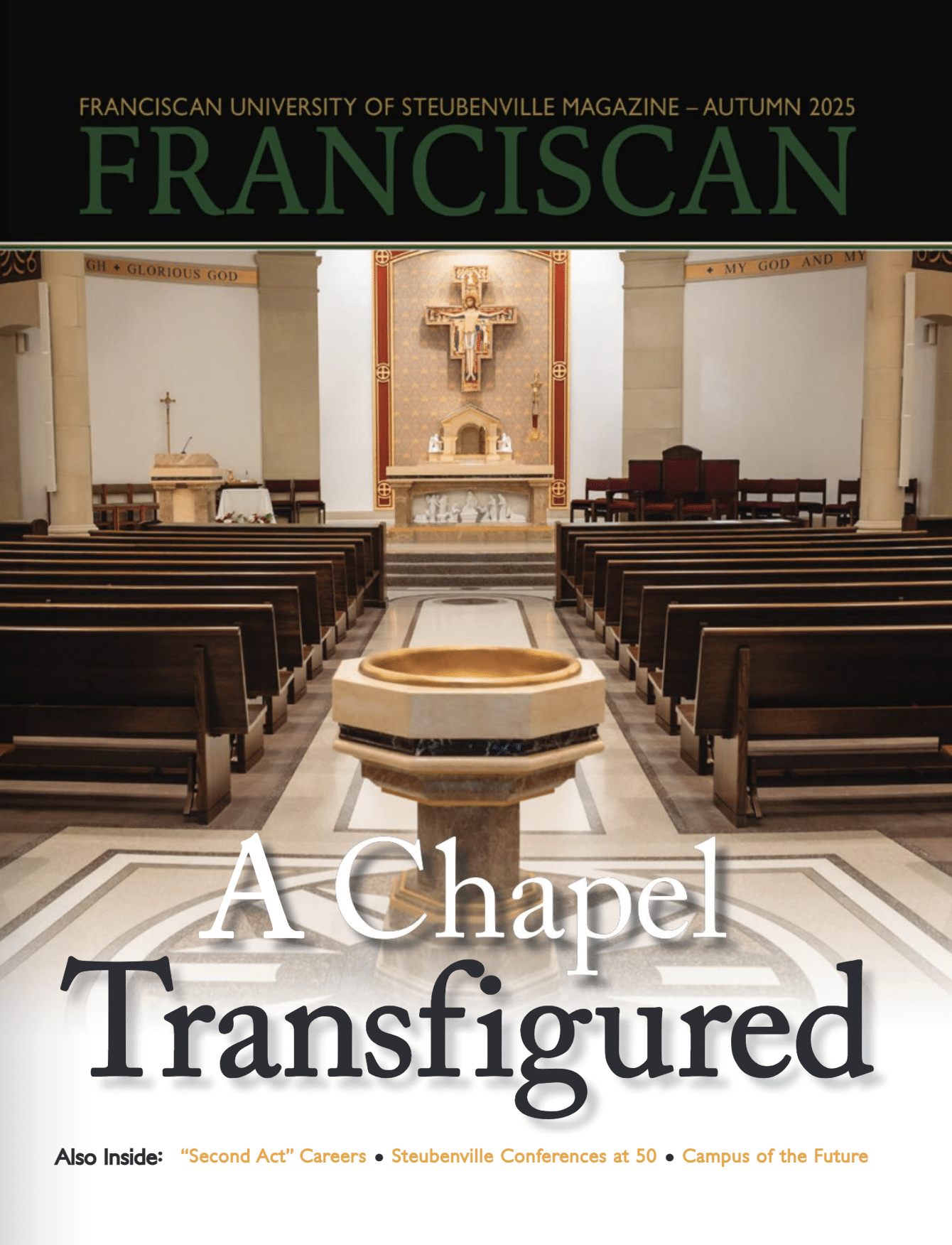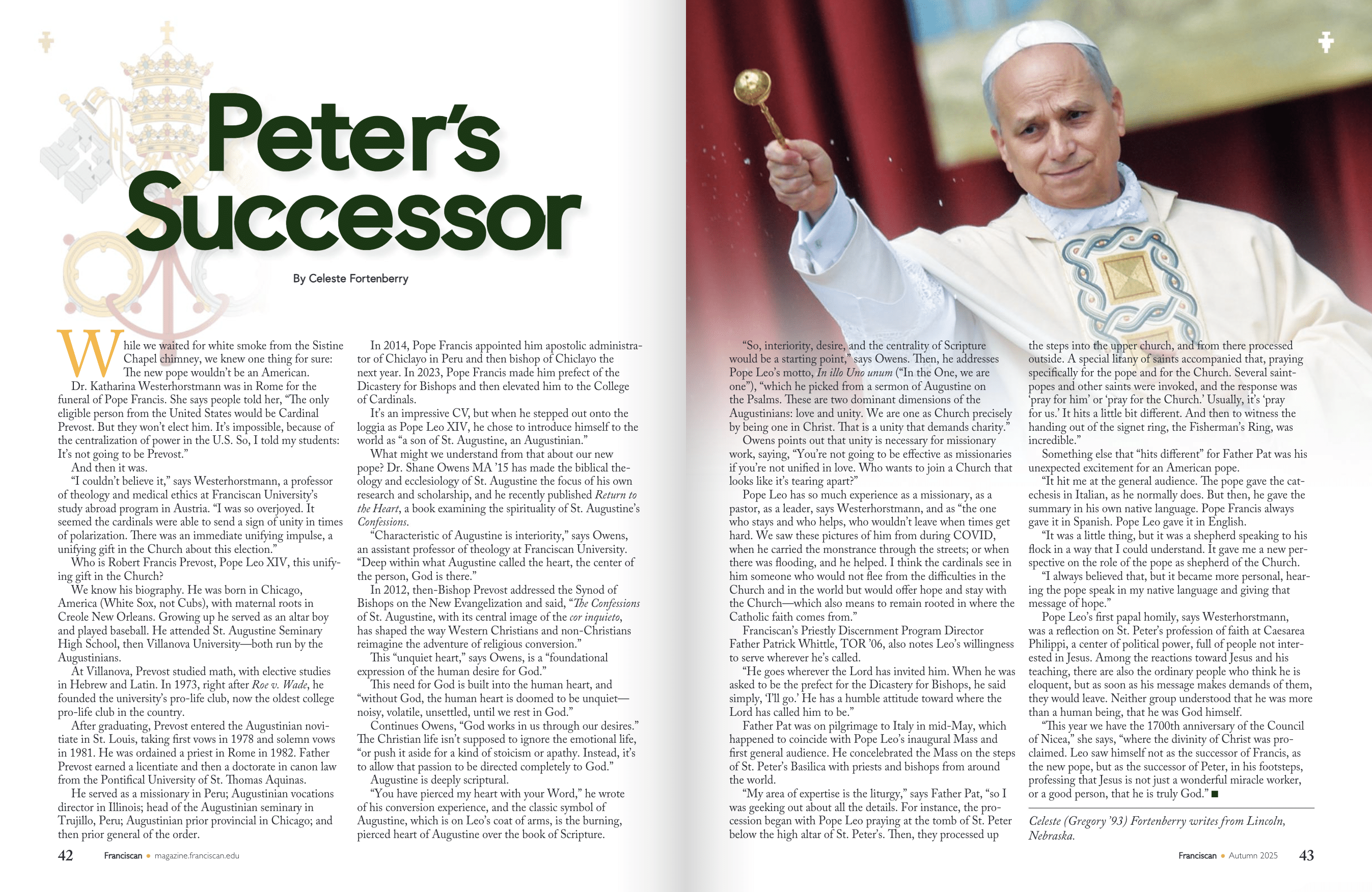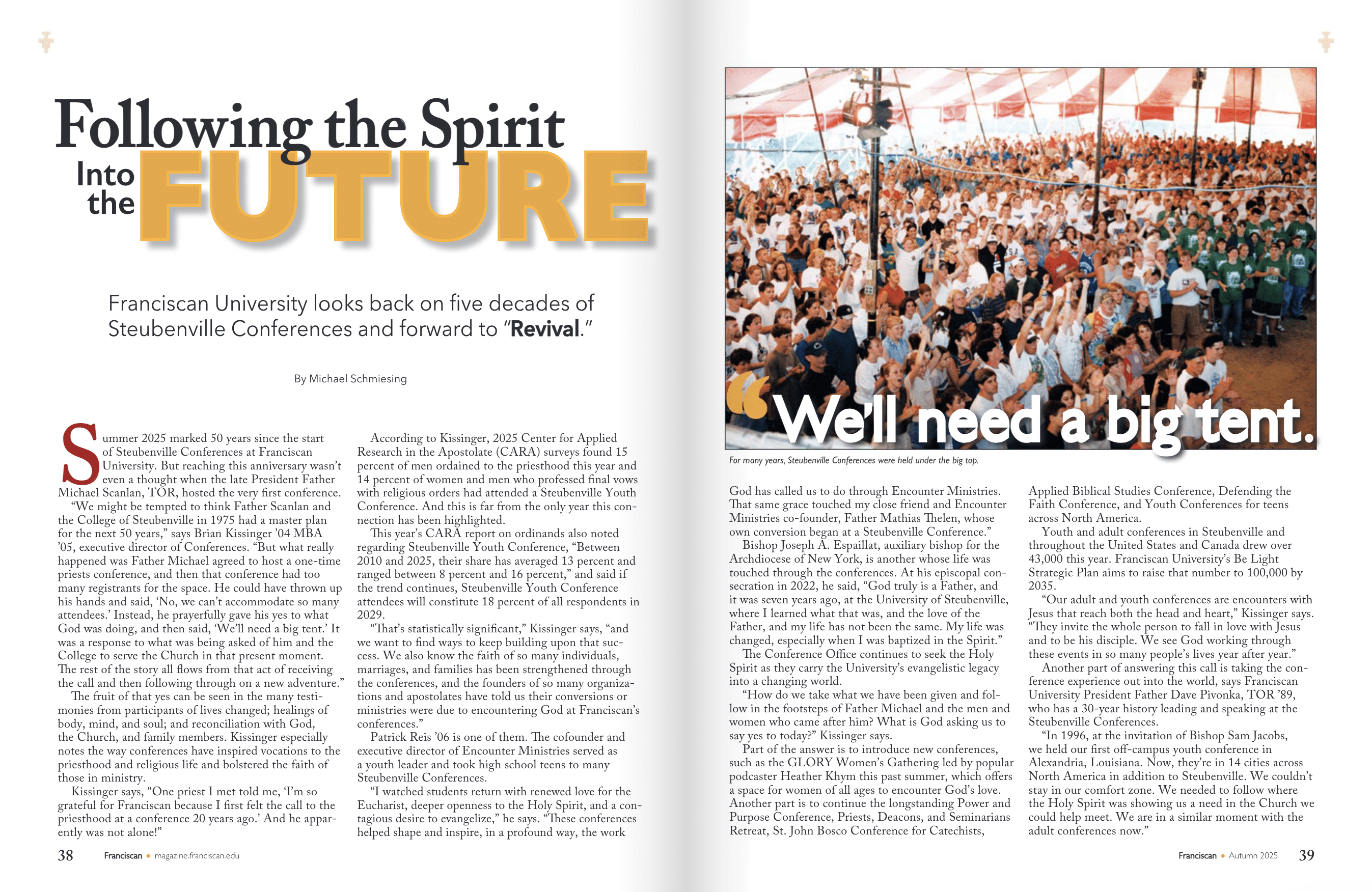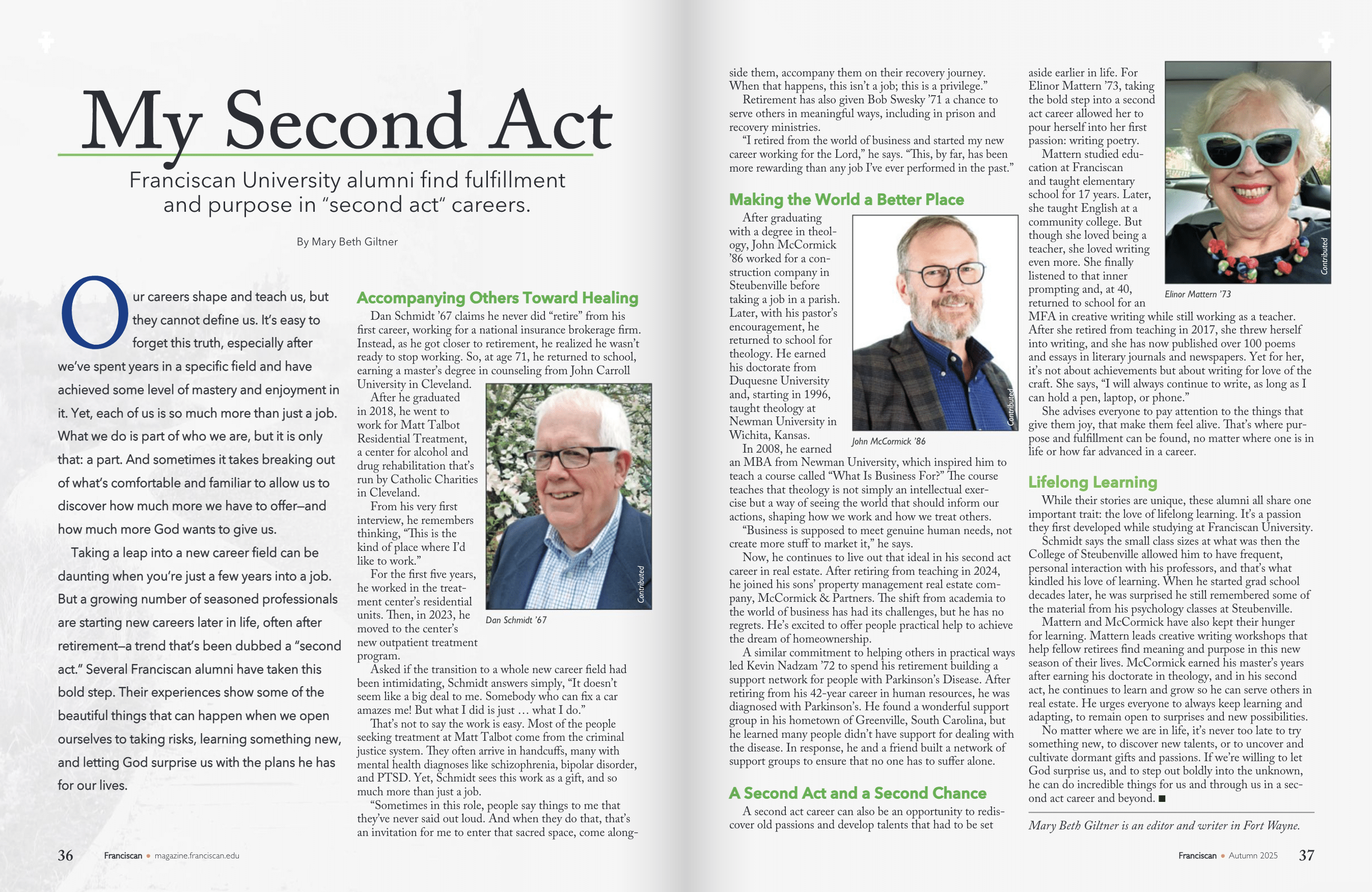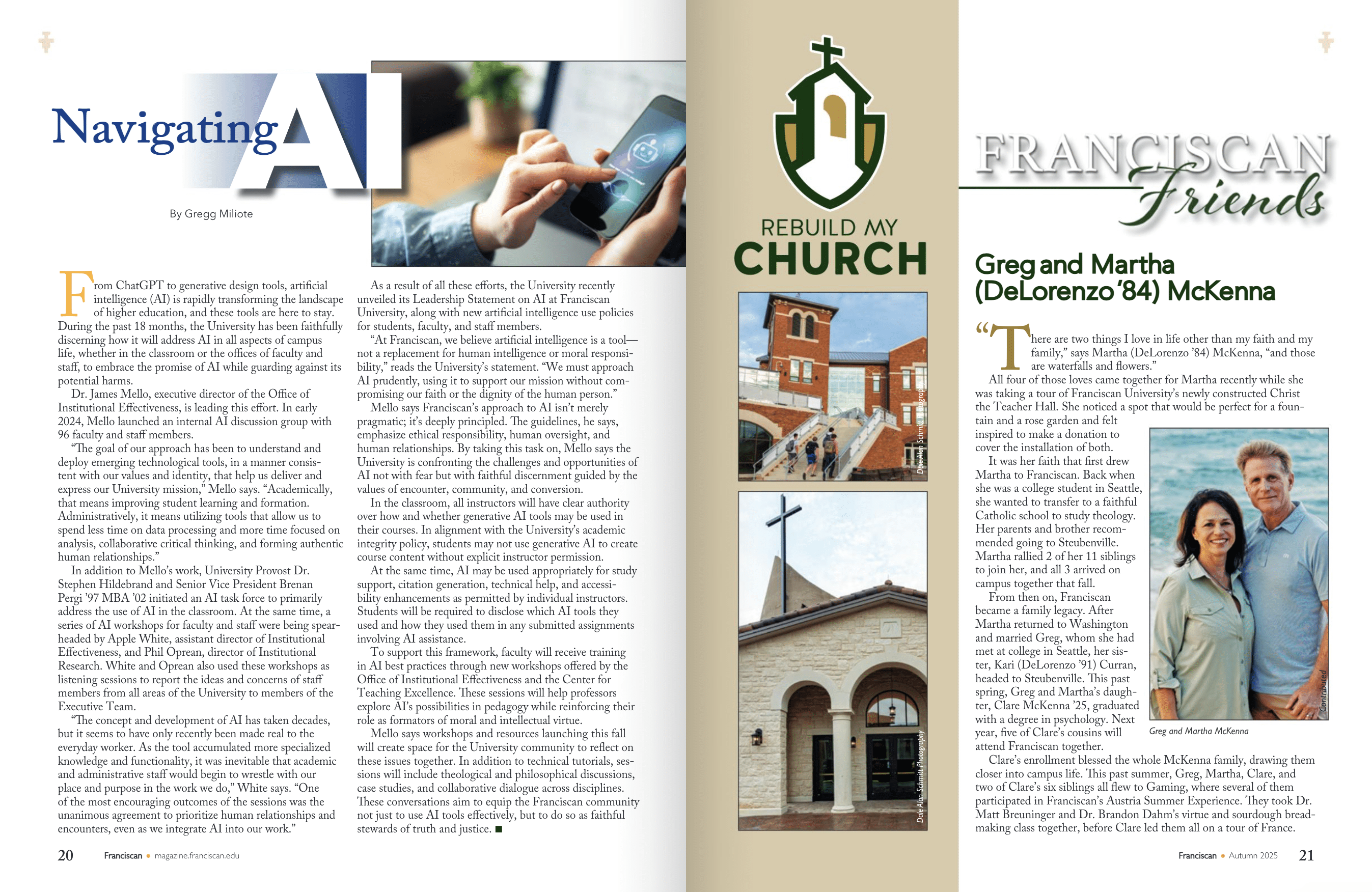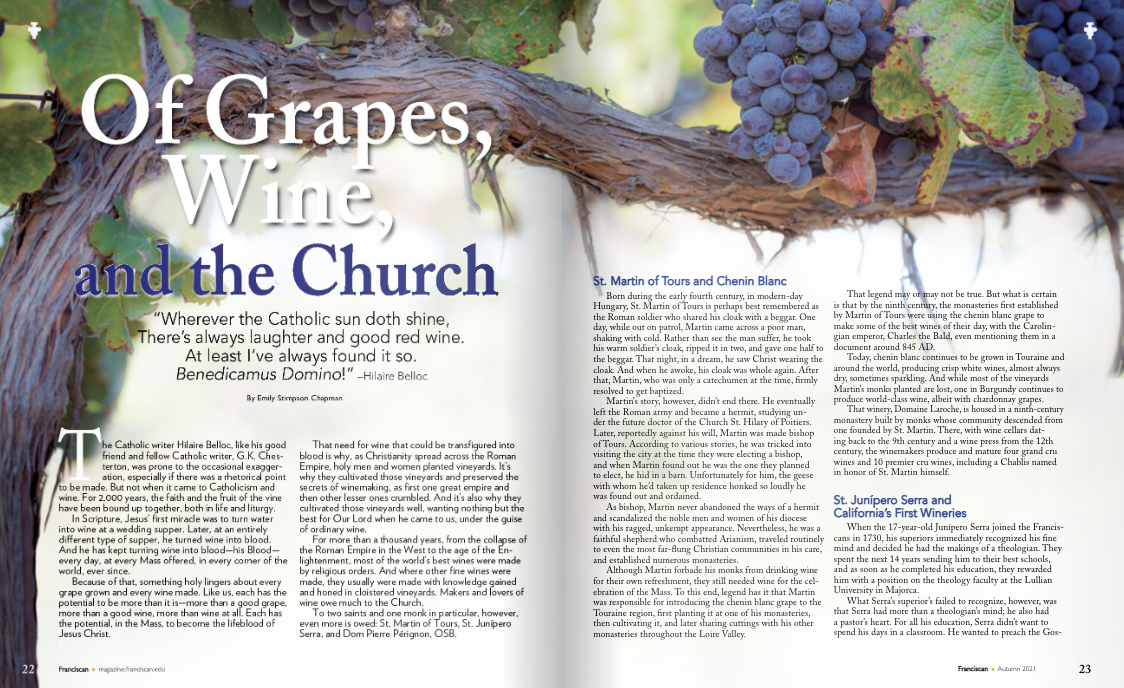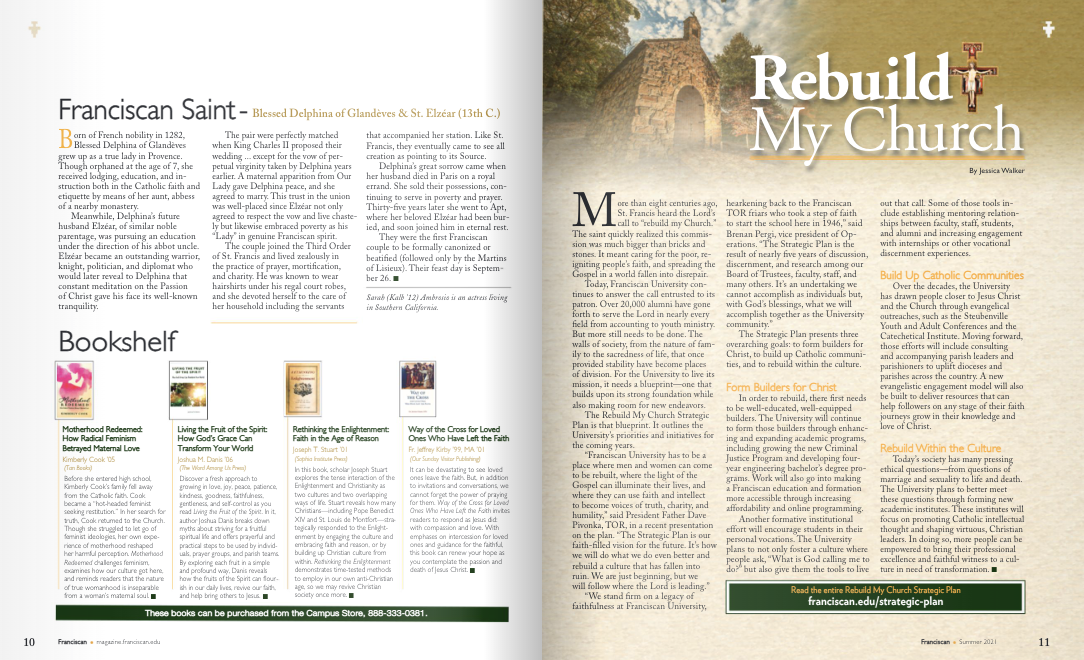While we waited for white smoke from the Sistine Chapel chimney, we knew one thing for sure: The new pope wouldn’t be an American.
Dr. Katharina Westerhorstmann was in Rome for the funeral of Pope Francis. She says people told her, “The only eligible person from the United States would be Cardinal Prevost. But they won’t elect him. It’s impossible, because of the centralization of power in the U.S. So, I told my students: It’s not going to be Prevost.”
And then it was.
“I couldn’t believe it,” says Westerhorstmann, a professor of theology and medical ethics at Franciscan University’s study abroad program in Austria. “I was so overjoyed. It seemed the cardinals were able to send a sign of unity in times of polarization. There was an immediate unifying impulse, a unifying gift in the Church about this election.”
Who is Robert Francis Prevost, Pope Leo XIV, this unifying gift in the Church?
We know his biography. He was born in Chicago, America (White Sox, not Cubs), with maternal roots in Creole New Orleans. Growing up he served as an altar boy and played baseball. He attended St. Augustine Seminary High School, then Villanova University—both run by the Augustinians.
At Villanova, Prevost studied math, with elective studies in Hebrew and Latin. In 1973, right after Roe v. Wade, he founded the university’s pro-life club, now the oldest college pro-life club in the country.
After graduating, Prevost entered the Augustinian novitiate in St. Louis, taking first vows in 1978 and solemn vows in 1981. He was ordained a priest in Rome in 1982. Father Prevost earned a licentiate and then a doctorate in canon law from the Pontifical University of St. Thomas Aquinas.
He served as a missionary in Peru; Augustinian vocations director in Illinois; head of the Augustinian seminary in Trujillo, Peru; Augustinian prior provincial in Chicago; and then prior general of the order.
In 2014, Pope Francis appointed him apostolic administrator of Chiclayo in Peru and then bishop of Chiclayo the next year. In 2023, Pope Francis made him prefect of the Dicastery for Bishops and then elevated him to the College of Cardinals.
It’s an impressive CV, but when he stepped out onto the loggia as Pope Leo XIV, he chose to introduce himself to the world as “a son of St. Augustine, an Augustinian.”
What might we understand from that about our new pope? Dr. Shane Owens MA ’15 has made the biblical theology and ecclesiology of St. Augustine the focus of his own research and scholarship, and he recently published Return to the Heart, a book examining the spirituality of St. Augustine’s Confessions.
“Characteristic of Augustine is interiority,” says Owens, an assistant professor of theology at Franciscan University. “Deep within what Augustine called the heart, the center of the person, God is there.”
In 2012, then-Bishop Prevost addressed the Synod of Bishops on the New Evangelization and said, “The Confessions of St. Augustine, with its central image of the cor inquieto, has shaped the way Western Christians and non-Christians reimagine the adventure of religious conversion.”
This “unquiet heart,” says Owens, is a “foundational expression of the human desire for God.”
This need for God is built into the human heart, and “without God, the human heart is doomed to be unquiet— noisy, volatile, unsettled, until we rest in God.”
Continues Owens, “God works in us through our desires.” The Christian life isn’t supposed to ignore the emotional life, “or push it aside for a kind of stoicism or apathy. Instead, it’s to allow that passion to be directed completely to God.”
Augustine is deeply scriptural.
“You have pierced my heart with your Word,” he wrote of his conversion experience, and the classic symbol of Augustine, which is on Leo’s coat of arms, is the burning, pierced heart of Augustine over the book of Scripture.
“So, interiority, desire, and the centrality of Scripture would be a starting point,” says Owens. Then, he addresses Pope Leo’s motto, In illo Uno unum (“In the One, we are one”), “which he picked from a sermon of Augustine on the Psalms. These are two dominant dimensions of the Augustinians: love and unity. We are one as Church precisely by being one in Christ. That is a unity that demands charity.”
Owens points out that unity is necessary for missionary work, saying, “You’re not going to be effective as missionaries if you’re not unified in love. Who wants to join a Church that looks like it’s tearing apart?”
Pope Leo has so much experience as a missionary, as a pastor, as a leader, says Westerhorstmann, and as “the one who stays and who helps, who wouldn’t leave when times get hard. We saw these pictures of him from during COVID, when he carried the monstrance through the streets; or when there was flooding, and he helped. I think the cardinals see in him someone who would not flee from the difficulties in the Church and in the world but would offer hope and stay with the Church—which also means to remain rooted in where the Catholic faith comes from.”
Franciscan’s Priestly Discernment Program Director Father Patrick Whittle, TOR ’06, also notes Leo’s willingness to serve wherever he’s called.
“He goes wherever the Lord has invited him. When he was asked to be the prefect for the Dicastery for Bishops, he said simply, ‘I’ll go.’ He has a humble attitude toward where the Lord has called him to be.”
Father Pat was on pilgrimage to Italy in mid-May, which happened to coincide with Pope Leo’s inaugural Mass and first general audience. He concelebrated the Mass on the steps of St. Peter’s Basilica with priests and bishops from around the world.
“My area of expertise is the liturgy,” says Father Pat, “so I was geeking out about all the details. For instance, the procession began with Pope Leo praying at the tomb of St. Peter below the high altar of St. Peter’s. Then, they processed up the steps into the upper church, and from there processed outside. A special litany of saints accompanied that, praying specifically for the pope and for the Church. Several saintpopes and other saints were invoked, and the response was ‘pray for him’ or ‘pray for the Church.’ Usually, it’s ‘pray for us.’ It hits a little bit different. And then to witness the handing out of the signet ring, the Fisherman’s Ring, was incredible.”
Something else that “hits different” for Father Pat was his unexpected excitement for an American pope.
“It hit me at the general audience. The pope gave the catechesis in Italian, as he normally does. But then, he gave the summary in his own native language. Pope Francis always gave it in Spanish. Pope Leo gave it in English.
“It was a little thing, but it was a shepherd speaking to his flock in a way that I could understand. It gave me a new perspective on the role of the pope as shepherd of the Church.
“I always believed that, but it became more personal, hearing the pope speak in my native language and giving that message of hope.”
Pope Leo’s first papal homily, says Westerhorstmann, was a reflection on St. Peter’s profession of faith at Caesarea Philippi, a center of political power, full of people not interested in Jesus. Among the reactions toward Jesus and his teaching, there are also the ordinary people who think he is eloquent, but as soon as his message makes demands of them, they would leave. Neither group understood that he was more than a human being, that he was God himself.
“This year we have the 1700th anniversary of the Council of Nicea,” she says, “where the divinity of Christ was proclaimed. Leo saw himself not as the successor of Francis, as the new pope, but as the successor of Peter, in his footsteps, professing that Jesus is not just a wonderful miracle worker, or a good person, that he is truly God.”




